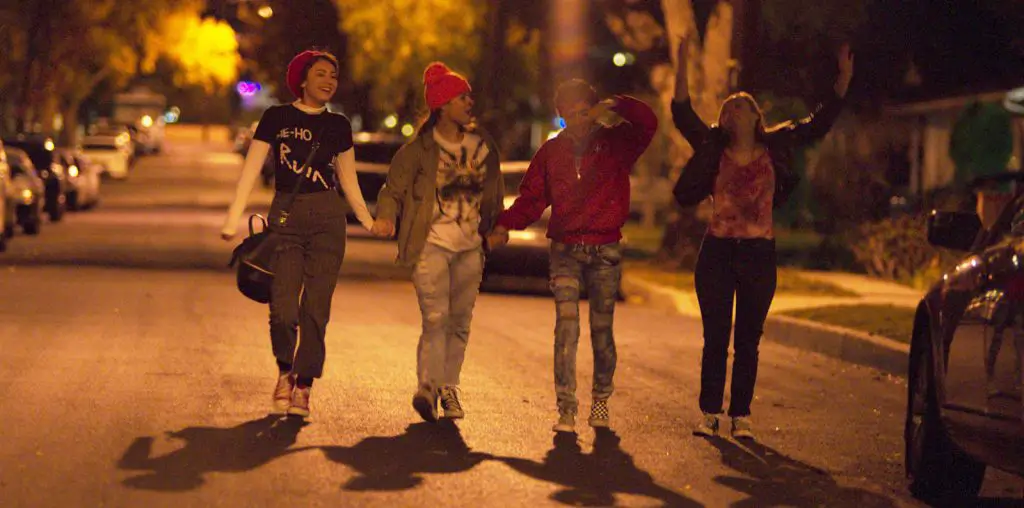
If you want an introduction to the films Alfred Hitchcock made before moving from England to the United States, “The 39 Steps” is a good start, not only because it laid much of the foundation of what was to come from the director but also because this Blu-ray release from Criterion contains much interesting background information.
Let’s start with the movie. “The 39 Steps” is a classic “ordinary man swept up by extraordinary circumstances” story. Our lead, the dashing Richard Hannay, attends a London vaudeville performance by Mr. Memory that descends into chaos when gunshots are fired. While you may wonder why a good chunk of screen time is spent on Mr. Memory in the first act, don’t worry: it pays off in act three.
Hannay leaves the theater and encounters the beautiful, charismatic Pamela, who has some wild stories to tell about bad guys who are trying to sneak some information out of the country. Thus we’re introduced to that plot device Hitchcock would later dub the “MacGuffin.” In this film, the MacGuffin turns out to come in a unique container, much like the MacGuffin in “North by Northwest,” a later Hitchcock spy thriller which “The 39 Steps” is often compared. (I was amused by the contrasting ways Hitchcock smash cuts from characters to trains in both films.)
The plot thickens when Pamela ends up dead with a knife in her back. The police don’t believe Hannay’s claims of innocence, and soon he’s on the run, seeking out the 39 Steps spy ring that Pamela talked about before she died. Hannay ends up in one sticky situation after another as he discovers that he can’t trust anyone, even when he thinks he has evidence that will exonerate him.
Robert Donat plays Hannay with elegance as the character resorts to all manner of trickery to get away, whether he has to feign having a gun in his coat or he ends up, in a case of mistaken identity, shoved in front of a podium to give an impromptu political speech. The latter incident showcases the kind of humor Hitchcock employed in many of his later films, as Hannay finds himself tongue-tied before launching into some fiery rhetoric that would fit in perfectly on the modern campaign trail. I dare say he even compares to Cary Grant’s performance in “North by Northwest.”
Like “North by Northwest,” “The 39 Steps” works best when you don’t think too much about the machinery behind the plot. (For example, why did Pamela’s assailant stab her in the back and then let her wander back into the apartment? If he had access to the apartment, why didn’t he try to kill Hannay too, for insurance?) Of course, that tends to be the best way to experience a spy thriller anyway, so it’s easy to forgive the logical lapses in “The 39 Steps.”
Moving on to this Blu-ray release, it’s packed with the kinds of extras you expect from a Criterion release. The commentary track by film scholar Marian Keane has been ported over from the 1999 Criterion DVD release; like many of Criterion’s commentaries, it’s similar to a film class lecture, which is perfect for those of us who hate hearing meandering commentaries by folks who obviously sat down to watch the film without having prepared anything to say ahead of time.
The 25-minute documentary “Hitchcock: The Early Years” is a nice complement to Keane’s commentary. It was made in 2000 and offers an introductory primer to the director’s time in England. There’s also a lengthy 41-minute 1966 British TV interview with Hitchcock that will further your knowledge of his early career, as well as 23 minutes of excerpts from a 1962 interview Francois Truffaut conducted with him.
The rest of the bonus materials focus on “The 39 Steps.” “The Borders of the Possible” takes a scholarly look at the adaptation of John Buchan’s novel while “Production Design” presents a series of production design sketches that you can move through one by one. Finally, “Lux Radio Theatre Presents ‘The 39 Steps'” is a 60-minute audio-only 1936 radio adaptation of the film, something that was quite common during the early 20th century, before TV pretty much wiped out dramatic presentations on the radio.
No Criterion release would be complete without a booklet (remember those, major film studios?), and this one offers up an illustrated essay by film critic David Cairns, who offers some interesting insights but pushes his interpretation a bit far when he starts making comparisons to fairy tales and mythology. Sometimes a bridge is just a cool place for our hero to hide; it doesn’t have to be a “Three Billy Goats Gruff” thing.
